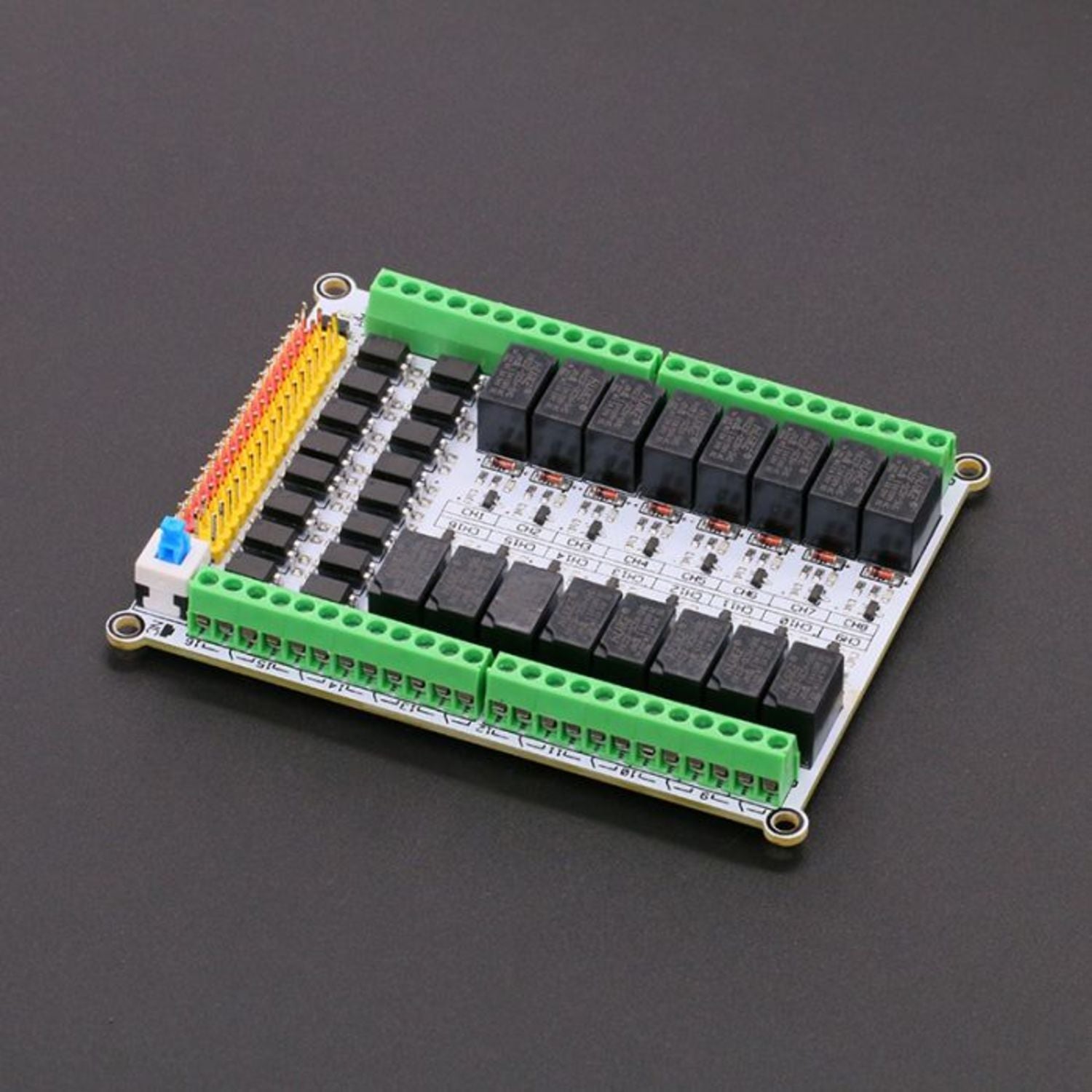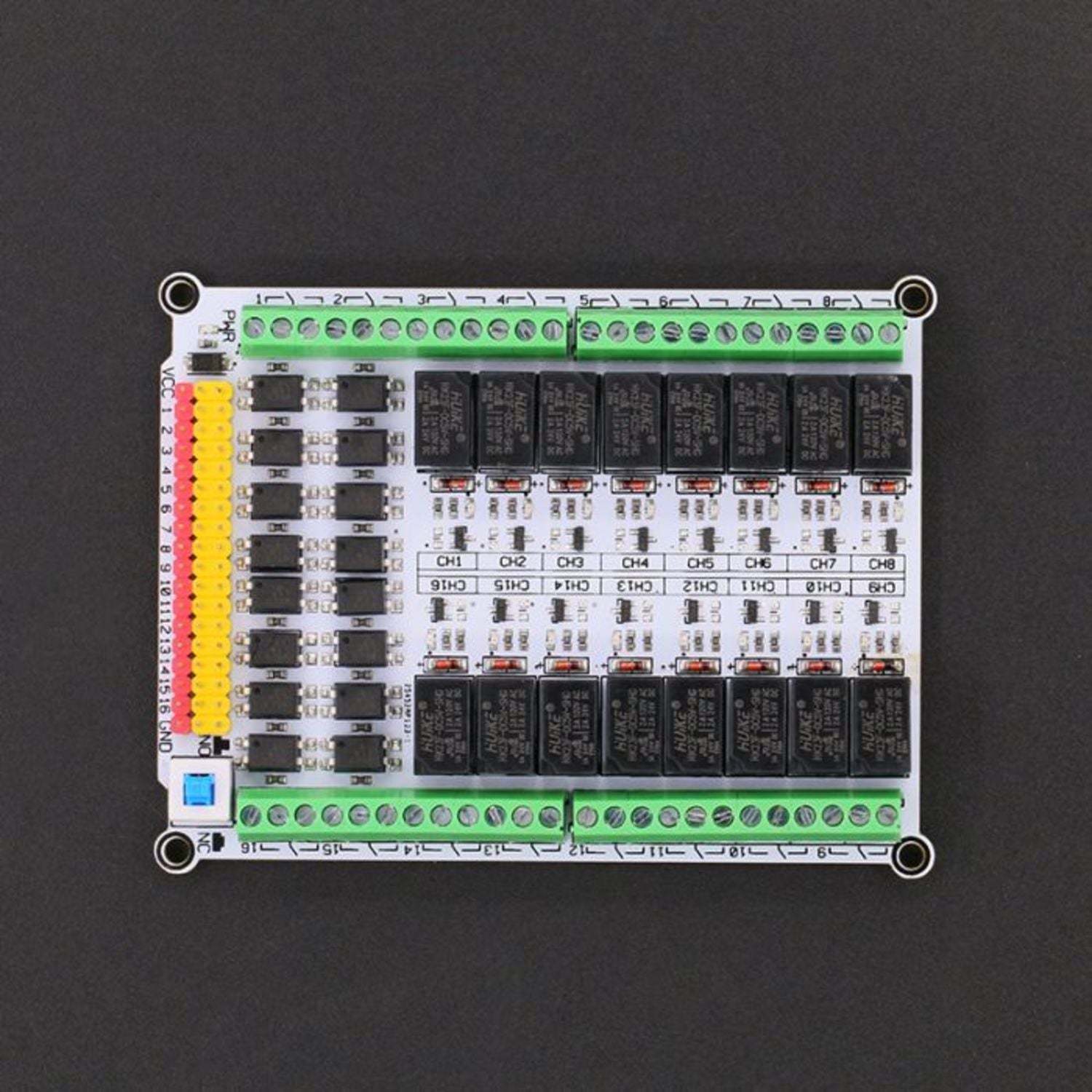This 16-channel mini-relay module is a great choice for controlling lighting, electrical, and other equipment. Its modular design allows for easy expansion with Arduino or other MCU boards like PIC, ARM, and MSP430. The relay output state is indicated by a light-emitting diode. It uses HUIKE mini-relays and has an ultra-small volume, close to that of an 8-channel relay module. With a maximum switching voltage of 150VAC and 24VDC, and a maximum switching current of 2A, it's quite powerful. Optocouplers provide optical isolation to ensure circuit security. There's also an elec-blocks socket, enabling you to control the relay module directly with a shunt cap without an MCU. The specifications include a drive current of 20mA, drive voltage of 5V/12V, secure optocouplers, LED power supply and channel indicators, 5V/12V TTL level control signal, white PCB color, 3mm positioning holes, and dimensions of 85mm*72mm. For more info, visit the ElecFreaks wiki page. Your help in improving documents, adding demo code or tutorials is appreciated.


Using this 16-channel mini-relay module is easy. First, connect it to your Arduino or other compatible MCU board according to the modular design. You can use it to control lighting, electrical appliances, and other equipment. If you don't have an MCU, you can use the elec - blocks socket and a shunt cap to control the module directly. When using, make sure the drive current is 20mA and the drive voltage is either 5V or 12V. The control signal should be at a 5V/12V TTL level. Remember, the maximum switching voltage is 150VAC and 24VDC, and the maximum switching current is 2A. Don't exceed these limits to avoid damaging the module. As for maintenance, keep the module in a dry and clean environment. If you see any issues, refer to the schematic on the ElecFreaks wiki page. You can also contribute to the wiki by adding more demo code or tutorials to help other users.